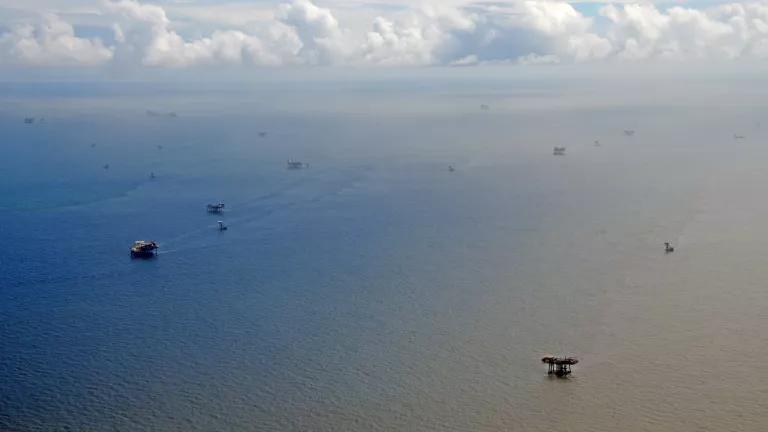
Readers of this blog know about ocean noise pollution, how our industrialization of the sea, and the increasing amount of sound we put in the water, is undermining ocean health. Today the National Oceanic and Atmospheric Administration (NOAA) announced what may be a sea change in the way we manage ocean noise off our shores.
Until now, the U.S. government has largely treated high-energy noise sources like a hazardous work site. If someone (in this case, a whale) is spotted too close, the industry or military practice is to stop producing those powerful pulses for a few minutes. This is what NOAA has required of the U.S. Navy when it trains with high-intensity sonar, and of the oil and gas industry when it repeatedly blasts the water with seismic airguns, and of construction projects when they use piledrivers at sea. But doing nothing more than scan for animals makes an awfully dubious approach to conservation. Whales can be notoriously hard to spot, even under the best of conditions.
More importantly, focusing entirely on a small area around a sound source misses the big picture: the cumulative, chronic rise in far-traveling ocean noise from all of this industrial, military, and commercial activity taken together. That noise is degrading marine habitat and making it difficult for many species of marine life to thrive. Courts have condemned NOAA’s myopic approach as “woefully inadequate and ineffective,” and the conservation and scientific communities have repeatedly called for management that reflects the true scale of the problem.
What NOAA released today—an agency-wide Ocean Noise Strategy—holds the promise, at least, of something new.
The new Strategy commits the agency to address chronic noise through every legal authority available to it. It calls for:
- protecting and restoring the natural soundscape within our National Marine Sanctuaries;
- mobilizing NOAA’s science assets to monitor ocean noise pollution off our shores;
- using existing marine mammal and endangered species regulations to reduce disruption of important habitat; and
- promoting quieter technologies, so that less noise gets into the water in the first place.
And that is just for starters.
In short, under the new policy-rich, four-chapter Strategy, NOAA would begin—finally—to manage noise as the pervasive ocean pollutant that it has become.

The key, of course, is implementation. For all the strong commitments it makes, the Strategy itself does not direct anyone within the agency to do anything. What is needed, plainly and soon, is a concrete implementation plan and a budget to achieve it. And while the Strategy would give NOAA a true leadership role, it is largely silent on how NOAA will engage other relevant federal agencies, like the Department of Transportation, that are presently AWOL on the issue.
As always, real change requires public engagement. If we want the new Ocean Noise Strategy to become more than a paper tiger, we will have to demand it. But as a reflection of agency commitment, today’s announcement from NOAA is a major step forward.
NRDC’s award-winning documentary on ocean noise, Sonic Sea, narrated by Rachel McAdams, is now showing on the Discovery Channel. You can take action—and arrange a screening—at sonicsea.org.



